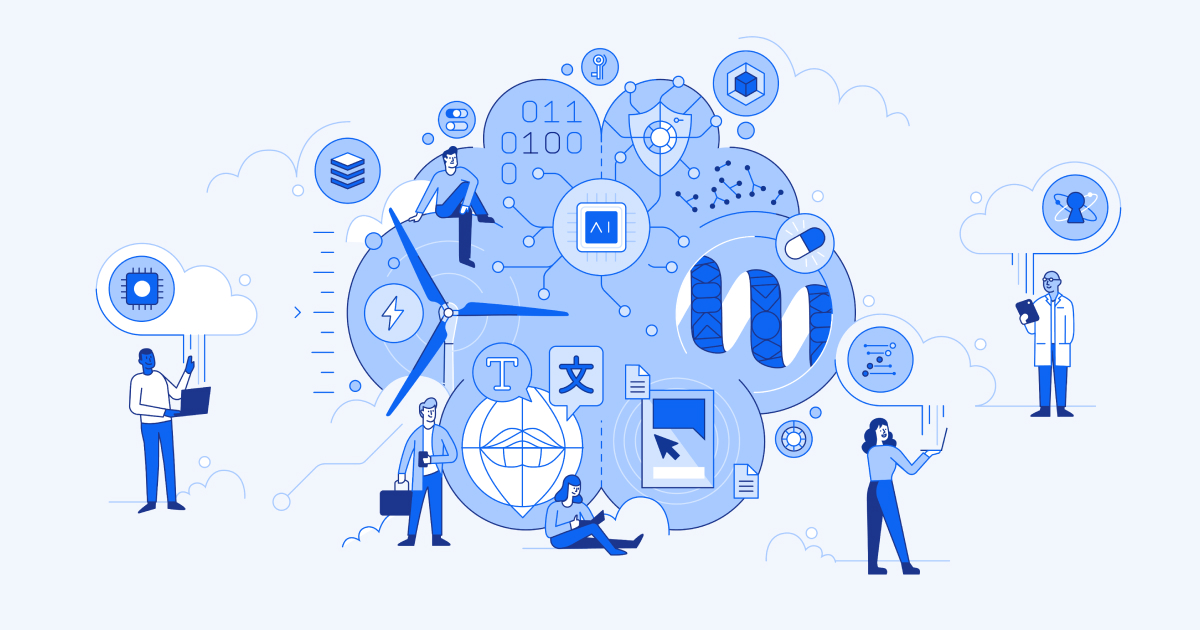Impact
Google Cloud empowers organizations to digitally transform themselves into smarter businesses. It offers cloud computing, data analytics, and the latest artificial intelligence (AI) and machine learning tools.
Using our AI research, we’re making these solutions better for Google Cloud customers all over the world.
Our research is deciphering written documents, enhancing the value of wind energy, and making it easier to use AlphaFold — our breakthrough AI system designed to better predict protein structures.
Expanding product innovation across Document AI
From cuneiform tablets to the printing press, countless ways of sharing written knowledge have been developed throughout history. Modern documents vary across countries, languages, and industries — making it hard to extract and use that information, particularly at scale.
Google Cloud’s Document AI enables users to make digital, printed, or handwritten information contained inside a document — like an invoice or tax form — extractable and queryable.
Before Document AI, industries looking to use AI tools for document understanding needed vast amounts of training data to perform well. But this data is often unavailable, incomplete, or lacks proper annotation, preventing widespread AI adoption.
Working together with the Google Cloud Document AI team, we developed innovative machine learning models that need 50-70% less training data than others to parse documents like utility bills and purchase orders.
We’re also working to improve Document AI’s performance in languages with smaller datasets. That way, we can help more customers across different industries and geographies leverage the benefits of Document AI.
Enhancing the value of wind energy
As part of our efforts to use AI for achieving net-zero emissions by 2030, we partnered with Google Cloud Professional Services to advance the wind energy sector — and to help build a carbon-free future for all.
Wind farms are an important source of carbon-free electricity, but their output can fluctuate depending on the weather. To balance supply and demand in the electricity grid, operators rely on energy generation forecasts. If operators can commit to selling a certain amount of electricity based on the next day’s forecast, they can get a better price.
In collaboration with Google Cloud, we helped develop a custom AI tool to better predict wind power output. This tool was trained on weather forecasts and the customer’s historical wind turbine data. An additional model recommends how much energy an operator can commit to delivering to the electricity grid, a day in advance.
The global energy and renewables supplier ENGIE is now piloting this technology in Germany. If the pilot is successful, ENGIE might apply the technology across Europe. Making wind energy more economically attractive — and improving its reliability — will encourage the uptake of renewables. That’s a win for everyone.
Making AlphaFold easier to use with Vertex AI
The development of a new machine learning model involves many stages — from design to deployment. It also needs good data infrastructure. To support data scientists and businesses, Google Cloud built Vertex AI, a single platform to access machine learning tools for every step of the development journey.
After releasing our breakthrough AlphaFold system, which accurately predicts the 3D structure of proteins, we made it available on Vertex AI. Now, scientists working in areas as diverse as drug discovery or fighting plastic pollution, can run the AlphaFold prediction workflow more easily by tracking experiments, optimizing hardware selection — and managing it all at scale.
In 2022, we also expanded the AlphaFold Protein Structure Database to include nearly all cataloged proteins known to science. We’ve partnered with Google Cloud to host this huge database, offering more than 200 million proteins for bulk download. Billions of structures have already been downloaded and the database quickly became an essential tool for the scientific community, catalyzing a new wave of progress in biology.



